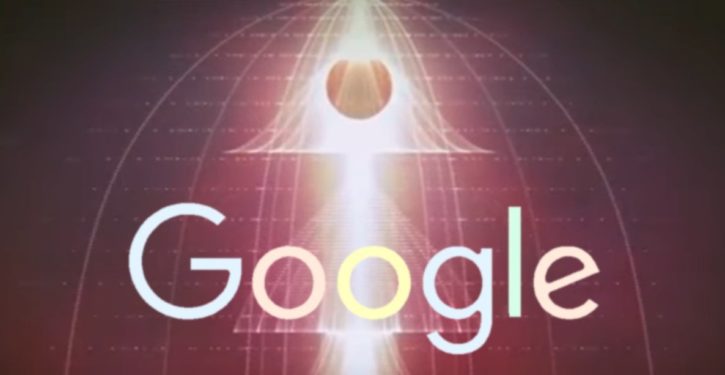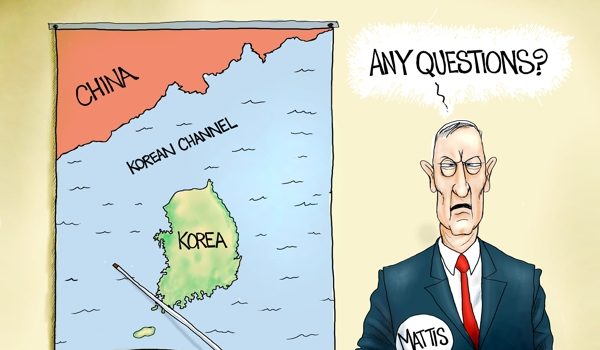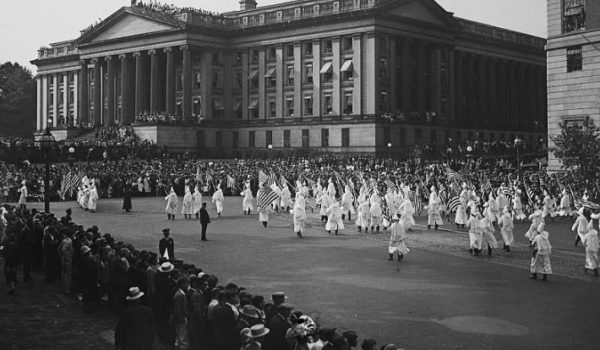
If you incite lawsuits against your own company, that may be a sign that you are a bad CEO. But that’s what a CEO of a Google subsidiary did recently to justify Google’s firing of an engineer for his memo criticizing the company’s diversity policies.
As the New York Times’s David Brooks notes, the memo contained statements about biologically-rooted gender-based differences in men’s and women’s interests that reflect “mainstream” thinking among scientific experts.
Google could have justified the firing of James Damore based on the doctrine of employment at-will, which allows an employer to fire an employee for any reason — good or bad — except an illegal one. But instead of doing that, the CEO of its YouTube subsidiary promoted the pernicious and false idea that employers have a legal duty to police the speech of their employees to prevent any “unlawful statements” about gender issues.
Will this presidential election be the most important in American history?
She also erroneously suggested to members of the public (including potential jurors) that failure to fire employees for even isolated offensive statements renders an employer liable for a “hostile work environment” in violation of Title VII of the Civil Rights Act.
In an editorial in Fortune, Susan Wojcicki, the chief executive of YouTube, which is owned by Google, decried the idea that biological differences could explain why there were fewer women in leadership roles in the tech industry:
[W]hile people may have a right to express their beliefs in public, that does not mean companies cannot take action when women are subjected to comments that perpetuate negative stereotypes about them based on their gender. Every day, companies take action against employees who make unlawful statements about co-workers, or create hostile work environments.
The idea that a single memo alleging the existence of biological differences could create a hostile work environment all by itself is just wrong. Even repeated statements promoting gender stereotypes have been deemed insufficient to create a hostile work environment in violation of Title VII. A single offensive communication of that sort is just not enough. There has to be a severe act, or a pervasive pattern of such communications.
For example, a federal appeals court court found no “hostile work environment” or illegal harassment even though a woman’s manager had told her, ‘We’ve made every female in this office cry like a baby. We will do the same to you. Just give us time. We will find your weakness,’” and allegedly made other offensive comments, such as saying “why don’t we have sales assistants that look like that?” after seeing a buxom, scantily-clad woman, and telling her, “Why don’t you go home and fetch your husband’s slippers like a good little wife.” (Hartsell v. Duplex Products, 123 F.3d 766 (4th Cir. 1997)).
In another ruling, that court reinstated a First Amendment lawsuit against a public employer by a teacher disciplined for a letter to the editor making light of gender stereotypes. (Seemuller v. Fairfax County School Board, 878 F.2d 1578 (4th Cir. 1988)).
Keep in mind that while Google is a private employer not bound by the First Amendment, that does not mean that the government has unlimited power to force Google to restrict speech by its employees. Courts have said private companies can’t be forced by the government to fire people for protected speech. (See, e.g., Korb v. Lehman (1990); Reuber v. U.S. (1985)).
Of course, a hostile environment can arise not just from one communication (such as Google engineer James Damore’s memo about Google’s diversity policies), but from communications by other employees as well.
As law Professor Eugene Volokh notes, a First Amendment problem with hostile-environment harassment law is that it aggregates the speech of many different speakers together in assessing whether an environment is hostile, meaning that no single comment need be physically threatening, or create a hostile environment all by itself, for a hostile environment to come into being over time.
But as news reports demonstrate, Google is such a politically-correct environment to begin with that it is very unlikely that Damore’s mild memo even contributed to a hostile work environment. And as one court put it when faced with many mildly annoying statements, “[A] long list of trivial incidents is no more a hostile work environment than a pile of feathers is a crushing weight.” Baird v. Gotbaum, 792 F.3d 166, 172 (D.C. Cir. 2015).
YouTube CEO Wojcicki’s statements about the law may be erroneous, but that doesn’t mean that they are harmless. Jurors who read her statement and others like it will be more likely to return erroneous jury verdicts against employers accused of harassment, based on the erroneous assumption that one or two communications that offend a female employee can be a “hostile work environment.”
Judges know that to violate federal law, conduct must be “severe or pervasive” enough to create a “hostile work environment” for a “reasonable person,” not a hypersensitive person. Based on that standard, the Supreme Court held that a single instance of exposure to sexually offensive material was nowhere near enough for liability. (See Clark County School District v. Breeden, 532 U.S. 268, 571 (2001)).
But jurors, who are not lawyers, often don’t grasp this, partly due to exposure to legally inaccurate statements like Wojcicki’s. So what happens when the plaintiff alleges lots of sexist conduct, enough that if it were all true, a jury could properly find a hostile work environment? But actually, only a few innocuous, or trivially offensive, communications (like Damore’s memo) in fact happened in the workplace?
Because the plaintiff alleged enough conduct for liability, the judge, as the gatekeeper, sends the case to the jury. But the jury, even after largely disbelieving the plaintiff, may still return a jury verdict for the plaintiff based on what little sexism or offensive speech the jury actually believes happened, because the jury doesn’t fully grasp the requirement of severe or pervasive conduct for liability.
And because the jury returns a general verdict, without an explanation of what conduct it believed or disbelieved, the judge has know way of knowing for sure whether the jury actually found liability based on a severe or pervasive pattern of sexism, or just isolated offensive communications.
A general verdict for the plaintiff can mask the jury’s application of an erroneous legal standard, such as the anti-employer legal standard cultivated by people like Wojcicki. Wojcicki has thus done a disservice to the company she heads by inciting potential jurors to rule against companies like hers in future harassment lawsuits.
Virtually all large companies like Google and YouTube face such harassment lawsuits as the cost of doing business (because it is inevitable that some employee will say or do something offensive to another employee, even when that is against company policy), and such lawsuits are ubiquitous for Fortune 500 companies.
For a Google executive to suggest that it is “unlawful” to argue that there are gender-based differences — as Wojcicki did — could also undermine Google’s defense against any discrimination lawsuit by female employees over workforce gender imbalances. Employers defend against such imbalances precisely by arguing that they reflect differences in men’s and women’s interests, on average, rather than discrimination by the employer in hiring. For example, a federal appeals court ruled in favor of Sears, Roebuck & Co., which was sued over gender imbalances in its work force, by accepting expert testimony that men and women on average have different interests, and that women tend to be more risk averse. EEOC v. Sears, Roebuck & Co., 839 F.2d 302, 320-21, 334-38 (7th Cir. 1988) (finding that “interest alone can account for the [gender-based workforce] disparities computed under EEOC’s analysis.”).
As I noted earlier, the engineer Google fired may theoretically have a valid legal claim against it for retaliatory discharge, under one of the few statutory exceptions to the doctrine of employment at will. But he is a non-lawyer who appears not to be well versed in the law. So he doesn’t seem to realize that he can sue under the statute I cited. Instead, he apparently seeks to sue under a different statute under which his claim is likely to fail.




